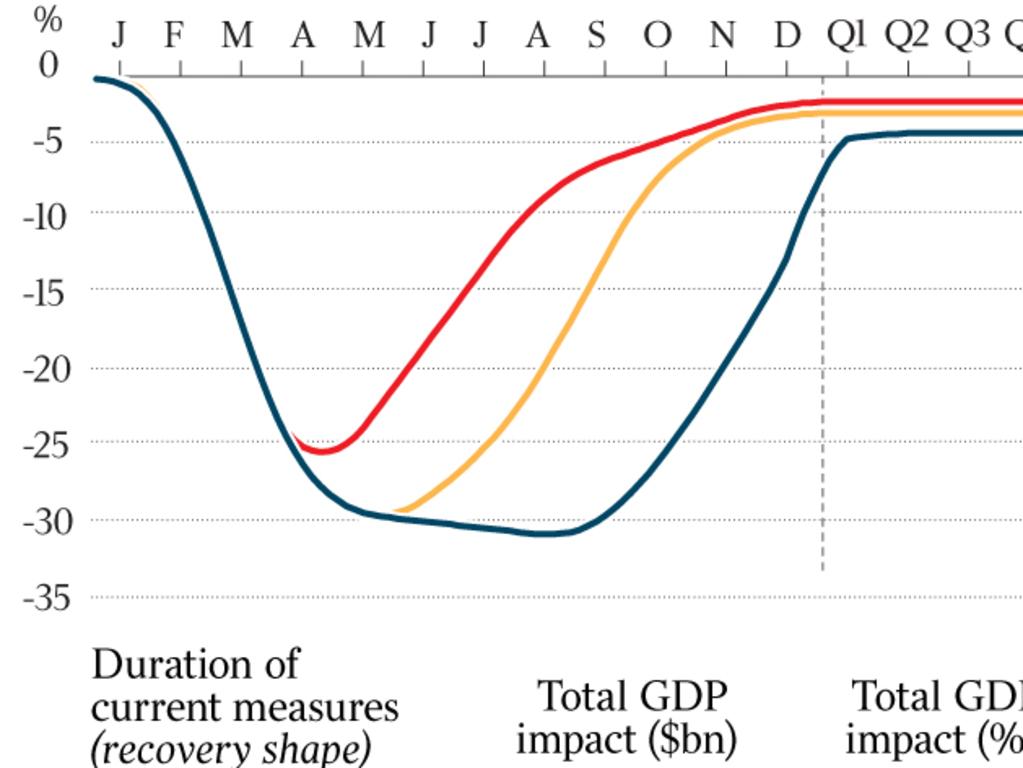‘Step aside’: business straining at the leash
Business leaders say the onus is on the states and territories to implement a sweeping three-step plan and reopen the economy.

Business leaders are warning the onus is on the states and territories to implement a sweeping three-step plan and help reopen the economy by the end of July, pushing for swift action on the restoration of crossborder travel and resumption of face-to-face classes for students.
Australian Chamber of Commerce and Industry chief executive James Pearson said the risk with the national cabinet plan was that states and territories would move at “different speeds” and argued that the business community wanted to ensure they did not make “substantial detours from the road map”.
“We certainly hope there won’t be any U-turns,” Mr Pearson said. “The onus now will be on state and territory governments to announce their own plans and how they will proceed and the extent to which they will be consistent with this road map.”
Australian Industry Group chief executive Innes Willox said the three-step road map was a “light at the end of the tunnel” in setting key benchmarks for the states and territories. As a first step, Mr Willox urged the states with border restrictions to “open those borders immediately”.
“An equally important economic priority is to fully reopen our schools. Keeping schools closed makes the return to work incredibly difficult for parents and also impacts on business productivity,” he said.
“It is critical that the states and territories continue to take account of not just the economic costs of the continuing restrictions but also the human costs associated with isolation and lack of opportunities to make productive contributions to the recovery and rebuilding task.”
The Business Council of Australia said the plan was an “important milestone” on the nation’s road to recovery, which would give the community and businesses confidence.
The BCA is also due to announce on Saturday that it is setting up a series of working groups to pinpoint reform ideas that can help drive the economic recovery in key sectors including energy, construction, infrastructure, telecommunications, health, skills, tax, tourism, workplace relations, trade and regional development.
These working groups will be guided from advice by leading economic thinkers, including the chairman of the 2015 competition review, Ian Harper, and former Treasury secretary Ken Henry, as well as banking chief economists.
BCA president Tim Reed said the nation had a “once-in-a-generation opportunity to recraft the kind of society we want to be” and ensure Australia had a “highly skilled, competitive and productive economy”. “We don’t have time to waste,” he said.
National Australia Bank’s economics director Tapas Strickland said that although the three-staged relaxing of social-distancing restrictions marked the start of the economic recovery he thought unemployment would stay high in the near term. NAB is projecting unemployment will reach a peak of about 12 per cent next month, and take longer to decline.
AMP Capital’s Shane Oliver said that, while the rollout of the Morrison government’s three-stage plan would be gradual, the move was consistent with his view that April or May would mark the lowest point in economic activity.
Mr Oliver said while Scott Morrison noted that international travel would be the last thing to reopen, the main reason for the slump in the Australian economy was because domestic demand had been locked up.
“Australia has a tourism trade deficit with the rest of the world, so will perversely benefit if international tourist travel remains barred,” Mr Oliver said.
The National Retail Association welcomed the road map but expressed concern it only allowed a maximum of 10 patrons to dine at restaurants during phase one.







To join the conversation, please log in. Don't have an account? Register
Join the conversation, you are commenting as Logout